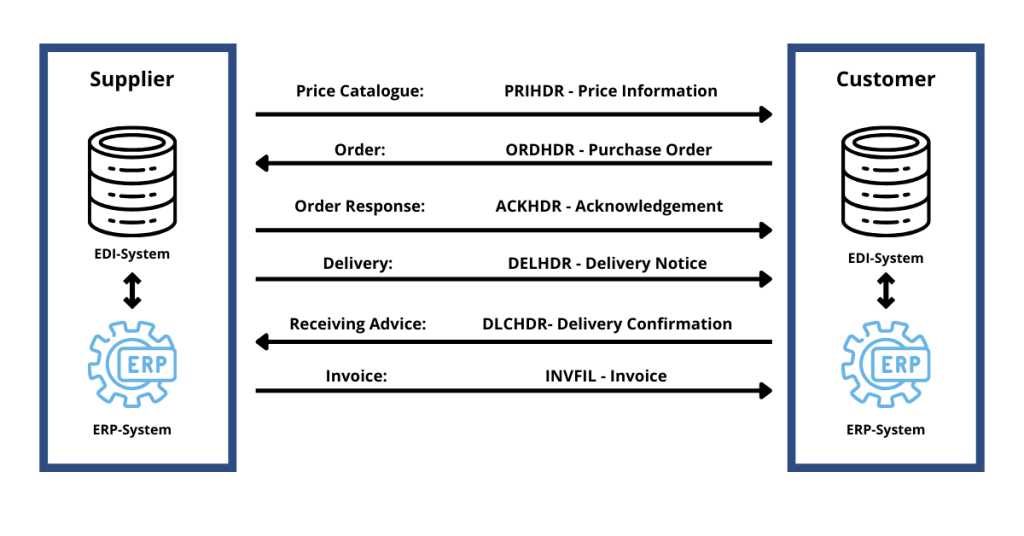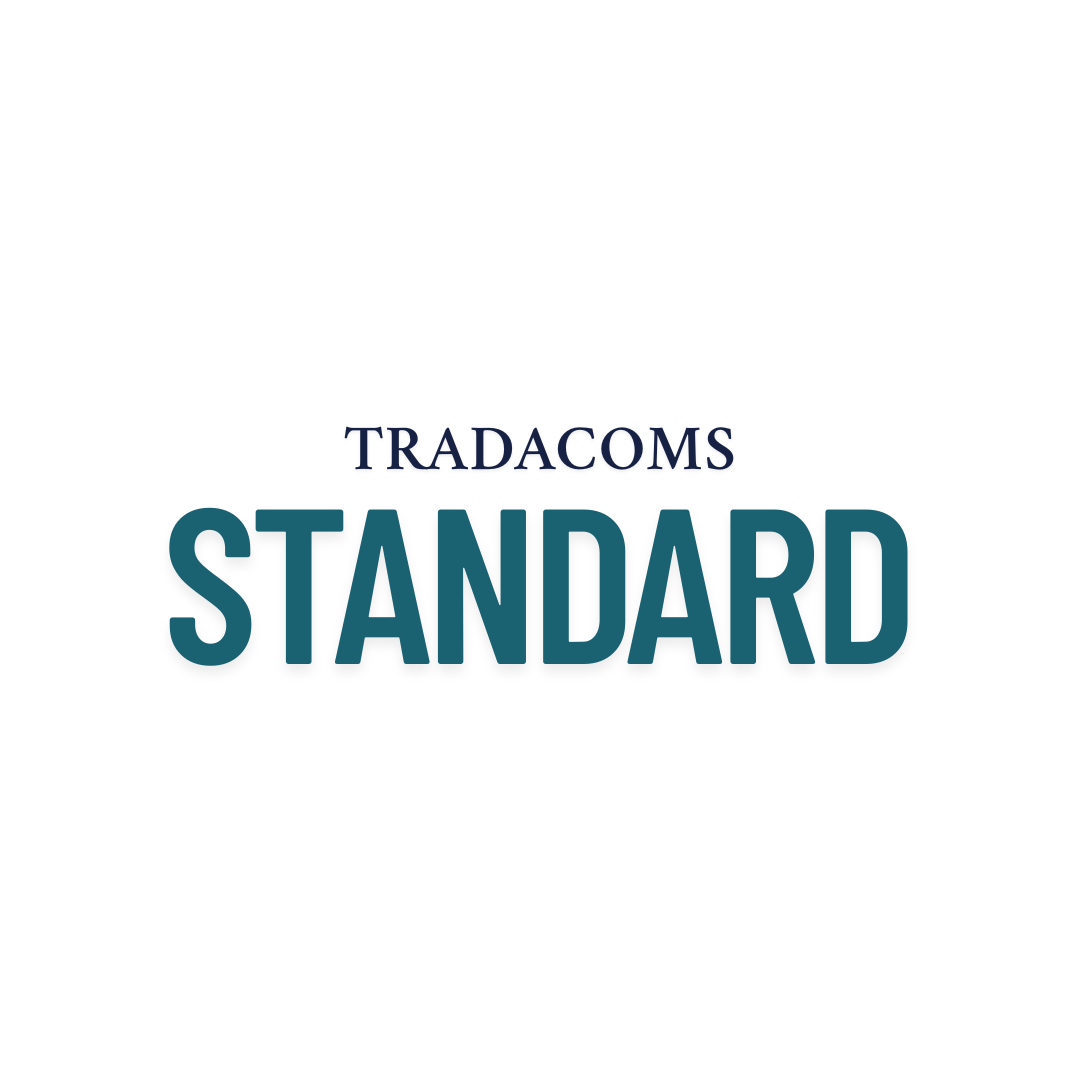Introduction
TRADACOMS stands for Trading Data Communications Standard is an early EDI standard that was originally introduced in 1982 and was primarily used in the UK retail sector.
It was maintained and extended by the UK Article Numbering Association, now called GS1 UK. Slowly, this standard became less obsolescent as its development effectively ceased in 1995. Despite this, it has proved durable, and most of the retail EDI traffic in the UK still uses it today.
The TRADACOMS standard provides a set of syntax rules to structure data, an interactive exchange protocol (I-EDI), and standard messages that allow multiple countries, regions, and industries to exchange documents.
TRADACOMS uses multiple messages instead of relying on a format of single messaging. TRADACOMS communication is comprised of 26 messages structured in a hierarchy. Each TRADACOMS message, much like EDIFACT, is given a six-letter application reference. For example, an invoice message is INVFIL, a payment order is PAYORD, a utility bill is UTLHDR, and so on.
TRADACOMS has a set definition of segments and elements, which describe the information held within the documents. This data can inform the recipient of a variety of different business documents, such as Invoices, Orders, and Delivery Notices.

Key Takeaways
TRADACOMS originated in 1982 as an EDI standard for UK retail and despite development ending in 1995, it remains widely used for retail EDI traffic in the United Kingdom today. Its longevity demonstrates its effectiveness in meeting specific business communication needs.
Unlike single-format systems, TRADACOMS employs 26 distinct messages with six-letter application references (like INVFIL for invoices). This comprehensive approach creates a standardized framework for exchanging various business documents.
While sharing similarities with EDIFACT, TRADACOMS uses distinctive syntax including STX/END segments instead of UNB/UNZ and ‘=’ as a segment tag delimiter. These technical differences give it a unique implementation profile in the EDI landscape.
Though initially created for UK retail, TRADACOMS expanded to serve multiple sectors including book trade, insurance (via Brokernet), news trade, textiles, and home shopping. This cross-industry adoption highlights its adaptable framework for diverse business needs.
TRADACOMS was specifically designed for UK business environments with sterling-only currency support and UK-specific tax information. This regional specialization explains both its enduring UK popularity and limited global adoption compared to universal EDI standards.
TRADCOMS Syntax and Usage
The syntax is very similar to EDIFACT, with the following principal differences:
- STX/END segments were used instead of UNB/UNZ
- BAT/EOB segments instead of UNG/UNE
- MHD/MTR segments instead of UNH/UNT
- The segment tag delimiter is an ‘=’ rather than a data element separator
- Explicit nesting is always used but implemented as data elements rather than tag extensions
- Only implicit decimals are used
- The compression rules are less rigorous, being merely advisory.
- The underlying GTDI standard uses SCH instead of UNA, but this is not implemented in TRADACOMS. The default EDIFACT UNOA separators are used.
The use of qualifiers, and consequently of composite data elements, is minor compared to EDIFACT. Any segment can occur only once in a TRADACOMS message definition, and so the segments tend to be very specific rather than generic with a qualifier to identify their function. TRADACOMS is not a ‘Lego‘ system in the manner of EDIFACT.
In EDIFACT a message is a transaction. TRADACOMS uses ‘Files’; with one or more examples of the message being preceded by a header message and followed by one or more trailer messages. This avoids the duplication of a common header and trailer information which can occur in a series of EDIFACT messages.
TRADACOMS files are equivalent to industry EDIFACT subsets. They are not generic in the way UN/EDIFACT messages are. They are only supposed to be for use within the UK since they make no allowance for currencies other than sterling, and tax information is geared to UK requirements.
TRADACOMS Service Segments
Service Segments are used to keep track of the transmission. The most common set is shown below.
- STX– Start of Interchange
- MHD– Start of Message
- MTR– End of Message
- MHD– Start of Message
- MTR– End of Message
- END– End of Interchange
Typical TRADACOMS Workflow Example

Sample TRADACOM Order
STX=ANA:1+5000000000000:SOME STORES LTD+5010000000000:SUPPLIER UK LTD+070315:130233+000007+PASSW+ORDHDR+B’
MHD=1+ORDHDR:9′
TYP=0430+NEW-ORDERS’
SDT=5010000000000:000030034′
CDT=5000000000000′
FIL=1630+1+070315′
MTR=6′
MHD=2+ORDERS:9′
CLO=5000000000283:89828+EAST SOMEWHERE DEPOT’
ORD=70970::070315′
DIN=070321++0000′
OLD=1+5010210000000++:00893592+12+60++++CRUSTY ROLLS:4 PACK’
OTR=1′
MTR=7′
MHD=3+ORDTLR:9′
OFT=1′
MTR=3′
END=3′
Here is the list of TRADACOMS EDI document standard transaction codes
| Application Reference | Message Type |
| ACKHDR | Acknowledgement |
| AVLHDR | Availability Report |
| BTOHDR | Book Trade Orders |
| PVUHDR | Book Trade Price/Availability Update |
| CAKHDR | Claims Acknowledgement |
| CLAHDR | Claims Message |
| CORHDR | Complex Order |
| CREHDR | Credit Note |
| CREADV | Credit Advice |
| CUSHDR | Customer Information |
| DEBADV | Debit Advice |
| DLCHDR | Delivery Confirmation |
| DELHDR | Delivery Notice |
| DYEHDR | Dye Instruction |
| GENHDR | General Communication |
| HSOHDR | Home Shopping Orders |
| INVFIL | Invoice |
| ISSUES | Issues |
| LPRHDR | Location Planning Report |
| PICHDR | Picking Instruction |
| ORDHDR | Purchase Order |
| PAYORD | Payment Order |
| PRIHDR | Price Information |
| PROHDR | Product Information |
| PPRHDR | Product Planning Report |
| RDAHDR | Retailer Database |
| RDBHDR | Retail B, 1-4 Retailer Database |
| RIFHDR | Retail Issues File |
| SADHDR | Stock Adjustment |
| SNPSTS | Stock Snapshot |
| SRMHDR | Statement & Remittance Details |
| SORDET | Supply and Returns Details |
| SORDAY | Supply and Returns Summary |
| SRSHDR | Supply and Returns Summary |
| RIFHDR | Retail Issues File |
| UCNHDR | Uplift Confirmation |
| UPLHDR | Uplift Instruction |
| UTLHDR | Utility Bill |
Industry Applications
While TRADACOMS was primarily designed for the UK retail sector, it has found applications in various other industries:
- Book Trade: The UK book industry has additional transactions defined for Orders, Issues, and Price & Availability Updates.
- Insurance Industry: Additional transactions were defined for use in the Insurance Industry using the TRADACOMS syntax, but with implicit nesting. This service was known as Brokernet and was established in 1986.
- Other Industries: There are industry message variants for the News Trade, Textiles, and Home Shopping.
Comparison to Other EDI Standards
Unlike EDIFACT, which is designed to be more generic and international, TRADACOMS files are equivalent to industry EDIFACT subsets but are more specific and less generic. They were primarily designed for use within the UK, as they make no allowance for currencies other than sterling, and tax information is geared specifically to UK requirements.
Conclusion
Originating in the United Kingdom, TRADACOMS has played a significant role in facilitating electronic communication between trading partners. Although it has seen reduced adoption with the rise of global standards, TRADACOMS continues to be relevant in specific industries, showcasing its resilience and adaptability in the ever-evolving landscape of business data exchange.
100% EDI Compliance Guaranteed With Commport EDI Solutions
Need Help? Download: EDI Buyers Guide
Unlock the full potential of your supply chain with our comprehensive EDI Buyer's Guide — your first step towards seamless, efficient, and error-free transactions
Frequently Asked Questions
TRADACOMS stands for Trading Data and Communication Standard. It is an early Electronic Data Interchange (EDI) standard that was developed in the United Kingdom for the exchange of business documents between trading partners.
While TRADACOMS has seen reduced adoption, it is still in use, particularly in certain industries in the United Kingdom. Many businesses have transitioned to more globally recognized standards, but TRADACOMS remains relevant in specific contexts.
Yes, TRADACOMS can be integrated with other EDI standards. However, due to its specific format and structure, integration may require mapping and conversion processes to align with the chosen standard.
TRADACOMS was initially developed for the retail sector in the United Kingdom, but its usage has extended to other industries. It is versatile and can be adapted for various business-to-business communication needs.
TRADACOMS is considered a regional standard with a more limited scope compared to global standards like EDIFACT and ANSI X12. Modern standards offer broader industry acceptance and are more prevalent in international business communications. Businesses often transition to these standards for increased compatibility and global integration.





